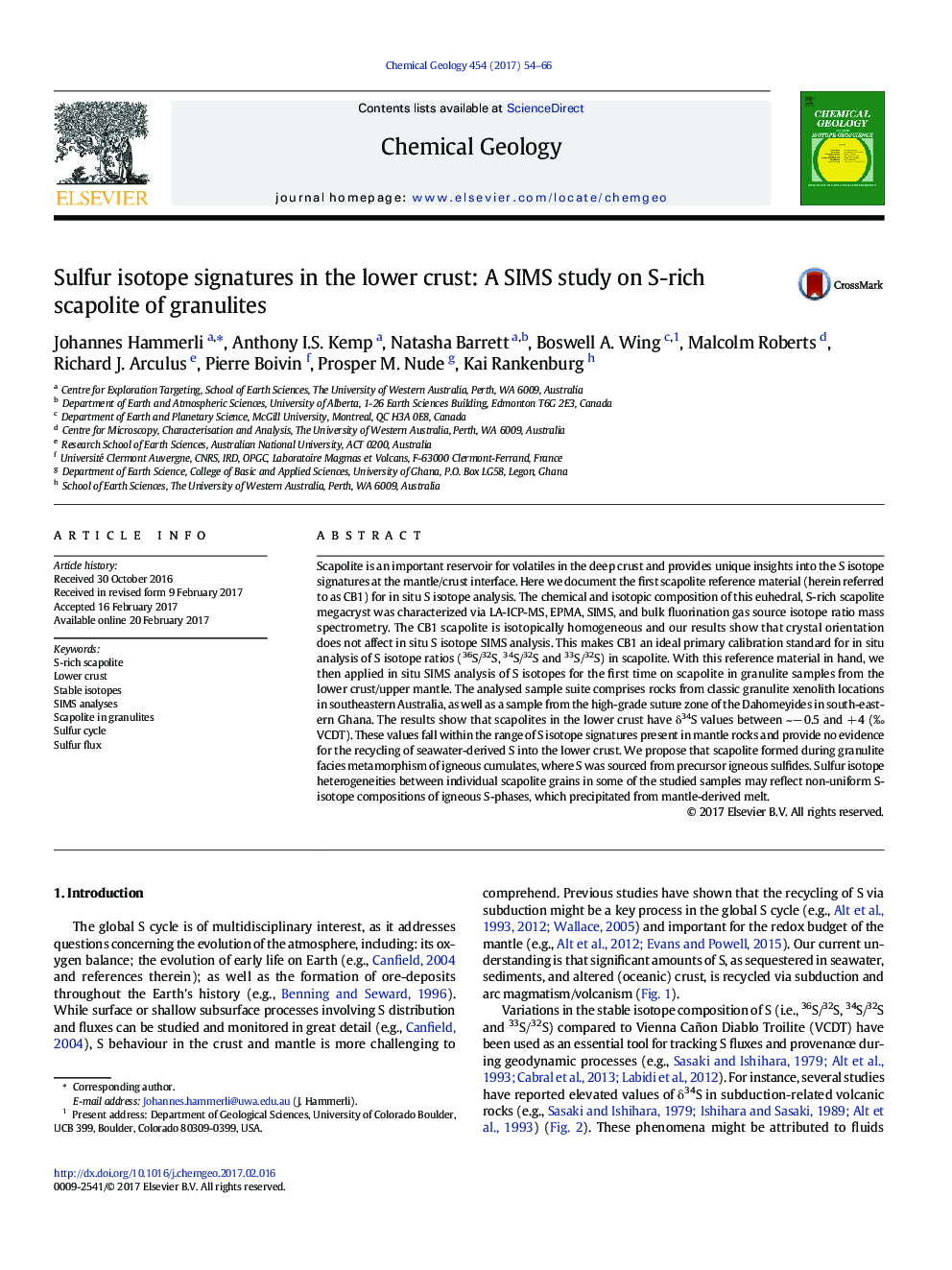| Article ID | Journal | Published Year | Pages | File Type |
|---|---|---|---|---|
| 5782805 | Chemical Geology | 2017 | 13 Pages |
Scapolite is an important reservoir for volatiles in the deep crust and provides unique insights into the S isotope signatures at the mantle/crust interface. Here we document the first scapolite reference material (herein referred to as CB1) for in situ S isotope analysis. The chemical and isotopic composition of this euhedral, S-rich scapolite megacryst was characterized via LA-ICP-MS, EPMA, SIMS, and bulk fluorination gas source isotope ratio mass spectrometry. The CB1 scapolite is isotopically homogeneous and our results show that crystal orientation does not affect in situ S isotope SIMS analysis. This makes CB1 an ideal primary calibration standard for in situ analysis of S isotope ratios (36S/32S, 34S/32S and 33S/32S) in scapolite. With this reference material in hand, we then applied in situ SIMS analysis of S isotopes for the first time on scapolite in granulite samples from the lower crust/upper mantle. The analysed sample suite comprises rocks from classic granulite xenolith locations in southeastern Australia, as well as a sample from the high-grade suture zone of the Dahomeyides in south-eastern Ghana. The results show that scapolites in the lower crust have δ34S values between ~â 0.5 and + 4 (â° VCDT). These values fall within the range of S isotope signatures present in mantle rocks and provide no evidence for the recycling of seawater-derived S into the lower crust. We propose that scapolite formed during granulite facies metamorphism of igneous cumulates, where S was sourced from precursor igneous sulfides. Sulfur isotope heterogeneities between individual scapolite grains in some of the studied samples may reflect non-uniform S-isotope compositions of igneous S-phases, which precipitated from mantle-derived melt.
